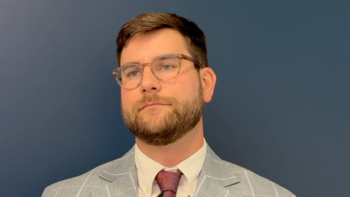
Oncology NEWS International
- Oncology NEWS International Vol 6 No 7
- Volume 6
- Issue 7
Aging Population Points to Greater Incidence of Malignant Mesothelioma
SAN FRANCISCO--Although malignant mesothelioma, a tumor usually found in the pleurae, is still uncommon, its incidence has been rising over the past two decades, probably due to long-term exposures to asbestos, Henri G. Colt, MD, said at a panel session at the American Lung Association/American Thoracic Society 1997 International Conference.
SAN FRANCISCO--Although malignant mesothelioma, a tumor usually foundin the pleurae, is still uncommon, its incidence has been rising over thepast two decades, probably due to long-term exposures to asbestos, HenriG. Colt, MD, said at a panel session at the American Lung Association/AmericanThoracic Society 1997 International Conference.
Data from a registry of all patients diagnosed between 1974 and 1993(3,324 cases) show that the disease is four times more common in men thanin women and is most often diagnosed among whites. The tumors occurs inthe pleurae in 86% of patients, in the peritoneum in 13%, and in othersites in 1%.
Pleural involvement tended to cluster in large seaport cities such asSeattle, Honolulu, and San Francisco, suggestive of asbestos exposures,possibly among Navy and shipyard workers, said Dr. Colt, associate professorof medicine, University of California, San Diego.
Several speakers on the panel noted that every proven diagnosis of malignantmesothelioma raises the specter of having to appear in court--because oflitigation arising from asbestos exposure.
From 1974 to 1988, the disease incidence peaked at age 75 to 79 years,but from 1989 to 1993, the peak age jumped to the 80- to 84-year range."Annual deaths from malignant mesothelioma will certainly rise duringthe next five years as our population ages, and physicians and surgeonswill continue to see more patients with this disease in their practices,"Dr. Colt said. Since there is no effective treatment, "this will presentnew, worrisome, challenges to physicians."
A Personal Crusade
Dr. Colt has embarked upon a personal crusade to call attention to thedisease. "Physicians are frustrated because very little can be donefor these patients," he said, "and patients feel stranded becausethey have no place to turn."
With an initial contribution from Oscar Gordon, "a valiant patient,"Dr. Colt said, he has helped to establish the Oscar Gordon Memorial Fund,a charitable foundation set up to fund research and popularize informationabout meso-thelioma. Dr. Colt has also made videotapes, primarily for patients,telling them what to expect and where they can get help, "and hopefullyto make them feel that they are not isolated in an indifferent world,"he said.
One problem hampering progress with the disease is the lack of a goodanimal model. "You can't apply for NIH funding until you get a model,"Dr. Colt said. Models are currently being developed by orthotopic transplantation--ie,the tumor is taken out of a patient and implanted into an immunocompromisedlaboratory animal.
"Once we get tumor models, we can proceed with development of genetherapies," he said. He noted that thoracos-copy, currently used toassist in diagnosis and in delivering palliative care, could potentiallybe used for intrapleural chemotherapy and the introduction of cyto-kinesand tumor-fighting agents directly to the surface of the pleurae.
Articles in this issue
over 28 years ago
Researchers Report Conflicting Data on Cervical Cancer in AIDSover 28 years ago
CIN Website Now Offers Daily Online Cancer Newspaperover 28 years ago
Members Sought for Director's Consumer Liaison Group: NCIover 28 years ago
Trial Attempts to Reverse Taxol Resistance in Ovarian Cancerover 28 years ago
Taxotere Bests Adriamycin in Metastatic Breast Cancerover 28 years ago
Antiemetic Tablets Prove Equal in Efficacy to IV Drug Regimenover 28 years ago
Preop Chemotherapy May Have Advantages in Primary Breast Cancerover 28 years ago
Doxorubicin Benefits Older Breast Cancer Patientsover 28 years ago
BRCA Mutation Risk May Not Be as High as ThoughtNewsletter
Stay up to date on recent advances in the multidisciplinary approach to cancer.


















































































